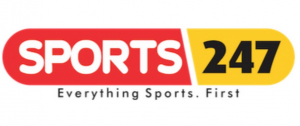NFL Africa has made bold claims about introducing American flag football to schools across Nigeria. While outreach events and talent camps have made headlines, the pressing question remains: Have these engagements actually left any lasting impact?
Despite mentions of “reaching” numerous schools, the reality is stark:
Many schools visited cannot confirm the receipt of basic playing equipment—no balls, flags, or uniforms.
There are no visible upgrades to school fields or training spaces tied directly to NFL Africa programs.
Teachers and coaches at several institutions report that after the initial event, there was no follow-up, support, or continued training.
Local observers argue that the project lacks substance. The so-called school development initiatives may amount to short-term PR wins, not long-term sport growth.
Where’s the Infrastructure?
Even with “claimed partners” allegedly involved in development, there is little to no trace of permanent infrastructure being established. No community football fields have been built. No state or regional NFL-sponsored facilities have been launched.
Meanwhile, Nigeria’s grassroots flag football leagues—run independently—continue to flourish despite limited funding, proving that passion and commitment are already present in the country.
NFL Africa, on the other hand, appears to be operating on a model of one-time visits with minimal material support, much more, operating models outside the grassroot operations of the same sport.
The contrast is glaring. Local leagues are organizing seasons and growing participation, while the NFL’s impact seems confined to a handful of photos and occasional camps.
Accountability and Thorough Vetting Needed
With thousands of secondary schools playing sports across Nigeria, and with flag football gaining traction year after year, the public deserves answers:
Where are the NFL-branded footballs, flags, and kits?
Have schools been supplied with playbooks, cones, jerseys, or coaching manuals?
Has NFL Africa checked in on these schools after initial outreach?
Did any school get the tools needed to keep the sport alive independently?
What is the pathway to graduating students into local or international professional leagues?
The absence of verified outcomes is troubling. Without documentation, it’s hard to accept the “development” claims being made.
NFL Africa may mean well, but intentions without transparency can do more harm than good, especially when they block support from credible local initiatives.
Conclusion: Show the Evidence—or Step Back
The NFL’s expansion into Africa could be a game-changer, but only if it’s grounded in real, community-based development. So far, what we see in Nigeria looks more like symbolic presence than meaningful progress.
If NFL Africa truly aims to develop the sport in Nigeria, it must:
Publicly list the schools it has engaged and what was delivered.
Work with all local stakeholders and not pick and choose sides
Provide evidence of equipment handovers, not just event coverage.
Invest in real infrastructure, not just camps or media moments.
Vet and re-evaluate its claimed partnerships to ensure they’re delivering on promises.
Until then, the flashy headlines won’t matter—because the kids, coaches, and schools still won’t have what they need to play the game.
This investigation is ongoing…









